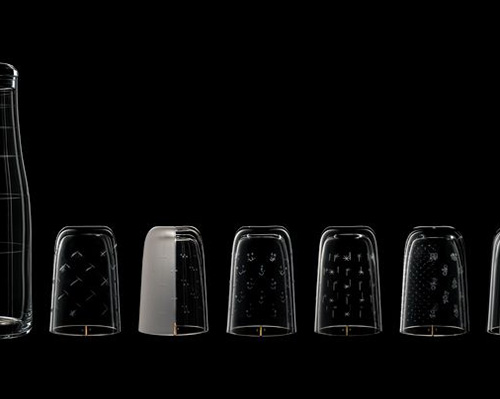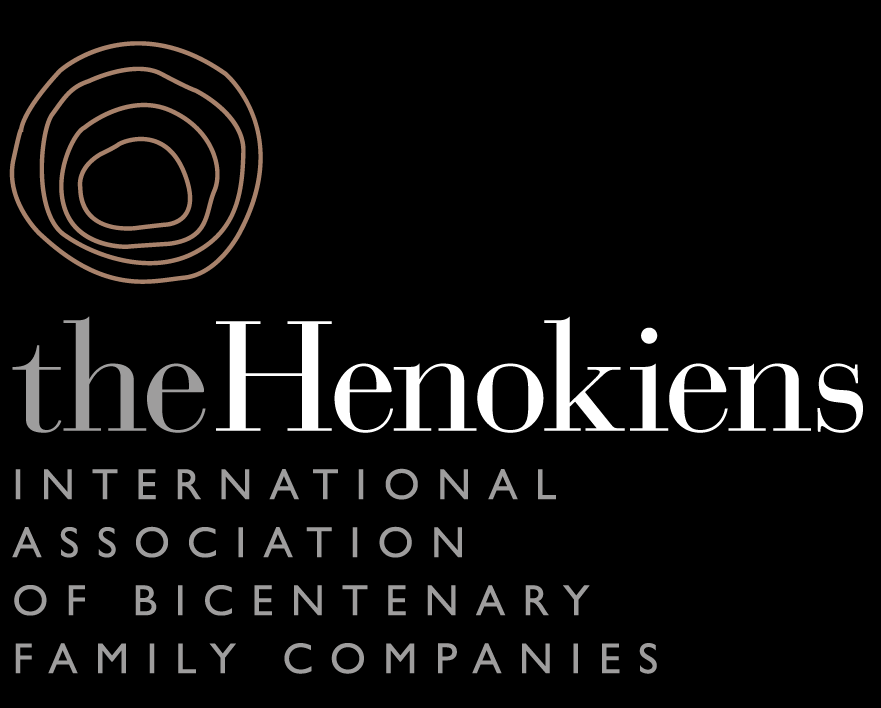J.& L. Lobmeyr
Kärntner Straße 26
1010 Vienne - Austria
Tel : +43 (1) 5120508-60
Fax : +43 (1) 5120508-85
Email : wien@lobmeyr.at
Internet : www.lobmeyr.at
Kärntner Straße 26
1010 Vienne - Austria
Tel : +43 (1) 5120508-60
Fax : +43 (1) 5120508-85
Email : wien@lobmeyr.at
Internet : www.lobmeyr.at

J.& L. Lobmeyr today :
Lobmeyr has always stood for refined craftsmanship and design of the highest order. Founded in 1823, the company makes drinking and ornamental glassware, chandeliers, and mirrors and is renowned for its collaborations with the outstanding designers of each era and its ongoing work on contemporary glass interpretation. No other company in the industry has produced so many design classics over the course of its history.
Cultivating the tradition
Lobmeyr has never stopped cultivating its tradition. Old and new styles are equally important, with yesterday providing inspiration for today. Cumulative knowledge, passed on through the family and from one generation of artisans to the next, makes such innovation possible. In 1856, Ludwig Lobmeyr designed the modernist Drinking Set No.4, the first wine glass made of wafer-thin muslin glass; it is Lobmeyr’s oldest continuously manufactured product.
In 1931, Adolf Loos’s drinking set with a ground glass base pioneered the simple water glass shape that is still relevant today, while the 2001 Liquid Skin drinking bowl by Lucy.D completely dispensed with conventional form and, like many other Lobmeyr designs, was welcomed into the collection of the Museum of Modern Art in New York. Lobmeyr has often been a pioneer of technological innovation. In 1881, in a collaboration with Thomas Alva Edison, the company developed the very first electric crystal chandeliers. In the 1950s, Lobmeyr made the first chandeliers with machine-cut rhinestone pendants, and then the first neon chandeliers.

First electric chandelier, Ludwig Lobmeyr, 1881
Hand-Made
Lobmeyr operates its own glass cutting and glass engraving workshops, using a copper wheel technique, and also has workshops where chandeliers and mirrors are manufactured. The special brand of fine craftsmanship that is cultivated here has become almost unique in the world. Only the “hot” side of glass working is carried out by select manufacturing partners: Lobmeyr creates the design, and selected glassworks make the glassware. The flagship store and workshops have always been located in Vienna.

Martin Stöbich Agate polishing
Lobmeyr is part of this city like no other company—and the city is part of Lobmeyr. It is one of the last family-run companies still occupying the pedestrian zone of the city centre, and it also has workshops nearby. Passers-by can watch the engravers refining glassware or the artisans making the chandeliers.

Wheel glass engraving
A family business since always
Lobmeyr which has now 52 employees celebrated its 200th anniversary in 2023. Personal dedication, a love of the material, and an emotional connection to the product have always determined the company’s identity and working methods. Lobmeyr has always been a family business. Such highly sophisticated products can only result from special craftsmanship and design processes that have been passed down through the family. Each generation leaves its special mark. Cousins Andreas, Leonid, and Johannes Rath—the great-great-grandchildren of founder Josef Lobmeyr—are the sixth generation to lead the company.

Johannes, Leonid, Andreas Rath
The three cousins have adapted the business structure and company organisation to the times. This includes developing a brand image that enables them to plan for today with future generations in mind and to refresh the corporate design while fully honouring their heritage.
An international network of dealers has been established in order to scale glass production. Today, around 300 stores around the world sell Lobmeyr glassware. Incidentally, the bestselling products are two designs by grandfather Hans Harald Rath: the chandelier model first produced in 1966 for the Metropolitan Opera in New York, and Drinking Set No.267 Alpha from 1952.

Metropolitan Opera chandelier, Hans Harald Rath, 1968
Like all previous owners, Andreas, Leonid, and Johannes work directly in the company. When the three Lobmeyr heirs joined the company, they divided their responsibilities not according to function but departments:
Johannes is responsible for the chandelier workshops, product development, and project sales. The chandelier division is active in manufacturing its own designs (both Lobmeyr designs and those of the companies it has incorporated, Zahn and Simhart), the buying and selling of antiques (its own and some made by other companies), repairs and restorations, and the sale of replacement parts. The range includes more than 5,000 models that can be made to order at any time.

The Chandelier workshop
Leonid manages glassware production in both external and in-house workshops and coordinates sales through the international dealer network. Lobmeyr’s glassware includes a wide range of drinking sets, vases, and bowls from smooth to cut, engraved, or painted glass, and from baroque shapes to contemporary designs.

Drinking Set No. 4, Ludwig Lobmeyr, 1856
Andreas manages the flagship store on Kärntner Strasse, where the entire Lobmeyr range can be found—along with key designs from European manufacturers that craft products with the same high standards: porcelain, silver, table linen, Venetian glass, and finely crafted products. Along with the Lobmeyr glassware, they tell a vivid story of European table culture, pointing towards the future. The flagship store serves private customers from Austria and all over the world, and develops and manufactures bespoke and personalised products at the customer’s request. In this respect, Lobmeyr’s in-house drawing department and above all knowledge of the possibilities of various materials are invaluable.

Interior Lobmeyr store in Vienna
Lobmeyr products are companions for life and are often passed on through generations. The company also services all products sold, wholly in the spirit of sustainability.

1823–1855 : Josef and Aloisia Lobmeyr

Josef Lobmeyr et Aloisia Lobmeyr
Company founder Josef Lobmeyr moved from Upper Austria to Vienna to labour as a journeyman glazier, and initially worked in various glass shops. In 1823, he opened his own glass business in the centre of Vienna, which he later operated together with his wife Aloisia. Josef Lobmeyr sold a wide range of glassware there, which he purchased from Bohemian glassworks—tableware, chandeliers, and mirrors in the styles typical of the Biedermeier era. He was more efficient and innovative than his established competitors, and was able to deliver the first service to the imperial and royal table as early as 1835—a prism-cut set with more than 4,000 pieces that remains on display in the museum of the imperial household to this day. From the 1830s, Lobmeyr began having its own designs manufactured, laying the foundation for the company’s way of working as a “glass publisher”. Since the time the second Lobmeyr generation took over, the company has sold only glassware made according to their own designs.
1855-1902 : Josef Lobmeyr and Ludwig Lobmeyr

Josef Lobmeyr et Ludwig Lobmeyr
After the death of their father in 1855, sons Josef Jr. and Ludwig took on the company’s operation, both overseeing business matters and Ludwig serving as artistic head. In 1860, the company was given the title of “Imperial and Royal Court Glazier and Glassware Purveyor”, becoming the only supplier of glassware for the imperial court from that time on. The brothers continued to develop the company’s international focus, presenting their product array at the second London World’s Fair in 1862. Increasingly, Lobmeyr glass was sold all over the world—even in the palace of the Khedive of Egypt. Josef Jr. died early, and Ludwig went on to become a leading figure in the European glass industry. He received numerous awards at world fairs, collaborating with the leading architects and artists of his time to create glassware at the pinnacle of the era. In 1856 he designed the Drinking Set No. 4, the first modernist wine glass. In 1882 he presented the first electric chandelier in collaboration with the Edison Company. Lobmeyr supplied much of the European nobility and intellectual bourgeoisie; extensive sets and furnishings were delivered to, for example, King Ludwig II of Bavaria, the Vienna Hofburg, and the courts of Serbia, Sweden, Portugal, and Spain. In 1895, Ludwig moved his business to Kärntner Strasse 26, where it is still based today.

Stand Lobmeyr at the 1873 Vienna World’s Exhibition
1902-1938 : Stefan Rath

Stephan Rath
Ludwig, who had no children of his own, took his sister Mathilde’s son Stefan into the company, first as an employee and later as a partner. Upon his passing in 1917, Stefan Rath became the sole owner of the Lobmeyr company. Following his uncle’s ideals of achieving the finest quality craftsmanship and design, he was open to the new modernist trends and actively participated in advancing the new style. The Wiener Werkstätte, founded by Josef Hofmann and Koloman Moser in 1903, is an important pioneer of modernism in Europe, and Lobmeyr implemented designs by almost all members of the artist group, many of whom are today icons of modernist glass design.
Stefan Rath led the company through the First World War and the ensuing economic crisis. He celebrated his greatest successes in 1914 at the Werkbund exhibition in Cologne, where the Wiener Werkstätte experienced its international breakthrough, and at the highly important Paris World Exhibition in 1925, where Lobmeyr was once again awarded a Grand Prix by the international jury. The designs of this era continue to be mainstays of Lobmeyr’s reputation and commercial success, and are represented in numerous museum collections worldwide.

Gold Medal at the World Exhibition de Paris 1925
1938-1968 : Hans Harald Rath

Hans Harald et Janet Rath
In 1938, Stefan Rath passed the company to his son Hans Harald, who guided the company through the Second World War and, in 1945, bolstered the development of Austria’s glass industry by co-founding a glassmaking school and two glass foundries. Hans Harald dedicated himself above all to a contemporary reinterpretation of the chandelier. This brought him great success—for example, with the lighting of the Vienna State Opera and the Metropolitan Opera in New York. He designed the first chandelier to use machine-cut crystal pendants, made by Swarovski, and the neon tube chandelier with Philips for their corporate headquarters in Eindhoven. His Alpha drinking set from 1952 was conferred the German Design Award, and is now Lobmeyr’s best-selling product.

Drinking Set “Alpha“
1968-2000 : Harald, Peter and Stefan Rath

Harald, Peter et Stefan Rath
After the sudden death of their father in 1968, Harald, Peter, and Stefan Rath became the fifth generation to run the company. In 1972, Lobmeyr purchased several smaller Viennese chandelier manufacturers, most notably Jos. Zahn & Co., founded in 1780, expanding the technical and stylistic repertoire of their workshops. They began fulfilling large chandelier commissions in different parts of the world, including for the boardroom of the Supreme Soviet in the Kremlin in Moscow, the Kennedy Center Opera House in Washington, and the burial mosque of the Prophet in Medina. The brothers embarked on a new path for the Lobmeyr company—away from applied arts and towards the fine arts—setting up a glass studio in an old bathhouse in Baden near Vienna in 1975, where renowned glass artists such as Dale Chihuly and Harvey Littleton created works of glass art.

Glass Studio Baden for Artistic Glass
Since 2000 : Andreas, Leonid and Johannes Rath
The sixth generation of Lobmeyr leadership, cousins Andreas, Leonid, and Johannes Rath, are guiding the company into the new millennium. They have redesigned the corporate structure in favour of a clearer and leaner model and redefined the Lobmeyr brand for the twenty-first century. The core values remain craftsmanship at the highest level, outstanding design made for each era, and personalised service for customers all over the world. Other areas of significant focus include adjusting the product range to meet today’s needs and developing an international distribution network for Lobmeyr. The original 1895 building on Kärntner Strasse is being carefully restored and redesigned in order to highlight the 200-year history of the family business while anchoring it in the present day.
Lobmeyr is currently one of the few brands in the world to uphold such high standards of quality in craftsmanship and design while successfully using innovation to carry tradition into a new era.

Contemporary Crystal

